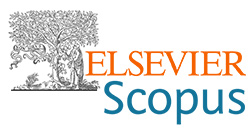Enhancing the capability through Recycling: Doubling the World's Largest Muon Telescope with almost-buried Iron tubes
DOI:
https://doi.org/10.62638/ZasMat1282Abstract
The GRAPES-3 experiment, housing the world's largest muon telescope at 2200 m above sea level in Ooty, is designed to study cosmic-ray effects on Earth. To double the telescope's capability, we have refurbished nearly the same number of proportional counters using iron pipes that are over half a century old. Before their utilization, these pipes were almost-buried 2300 meters underground at the Kolar Gold Field experiment following its decommissioning. The present work outlines various methods employed for repurposing these pipes, using several non-destructive characterization techniques, including X-ray Diffraction (XRD), Infrared Spectroscopy (IR), Scanning Electron Microscopy (SEM), and Energy Dispersive X-ray (EDX) techniques, to identify iron-bearing phases and conversion products. The results obtained from these instrumental techniques have been presented, along with a brief methodology for integrating the materials into the experiment. This extension of the experiment serves as an exemplary demonstration of reducing, reusing, and recycling the iron tubes that would otherwise be discarded on a large scale.
Keywords:
material characterization, sustainability, proportional counter, recycling, muonReferences
M.R. Krishnaswamy et al. (1982) Neutrino backgrounds in the Kolar Gold Field nucleon decay experiment, Pramana, 19, 525. https://doi.org/10.1007/BF02846097
H. Adarkar et al. (1989) Instrumentation for KGF nucleon decay experiment, Ind. J. Pure & Appl. Phys., 27, 679.
N. Hayashida, T. Kifune (1980) Nucl. Instr. Meth., 173, 431; T. Hara et al. (1979) Proc. 16th ICRC, 8, 166. https://doi.org/10.1016/0029-554X(80)90803-4
N. Ito et al. (1997) GRAPES III: A new large EAS experiment at Ooty, Proc. 25th ICRC, 7, 225.
S. Kawakami et al. (1999) Observation of cosmic ray modulation and possible detection of the solar flares with GRAPES III muon telescopes at Ooty, Proc. 26th ICRC, 7, 171.
Y. Hayashi et al. (2005) A large area muon tracking detector for ultra-high energy cosmic ray astrophysics: The GRAPES-3 experiment, Nucl. Instr. Meth. A, 545, 643. https://doi.org/10.1016/j.nima.2005.02.020
P.K. Nayak et al. (2024) Observation of thunderstorm-induced muon events in GRAPES-3 experiment, J. Atmos. Solar-Terr. Phys., 258, 106231; and references therein. https://doi.org/10.1016/j.jastp.2024.106231
F. Varsi et al. (2024) Evidence of a Hardening in the Cosmic Ray Proton Spectrum at around 166 TeV Observed by the GRAPES-3 Experiment, Phys. Rev. Lett., 132, 051002. https://doi.org/10.1103/PhysRevLett.132.051002
M. Chakraborty et al. (2024) Small-scale Cosmic-Ray Anisotropy Observed by the GRAPES-3 Experiment at TeV Energies, The Astrophysical Journal, 961, 87. https://doi.org/10.3847/1538-4357/ad132b
P.K. Mohanty et al. (2018) Was the cosmic ray burst detected by the GRAPES-3 muon telescope on 22 June 2015 caused by a transient weakening of the geomagnetic field or by an interplanetary anisotropy?, Phys. Rev. D, 97, 082001. https://doi.org/10.1103/PhysRevD.97.082001
P.K. Nayak et al. (2023) Contemplating the observed relationship between the global electric circuit and GRAPES-3 thunderstorm-induced muon events, Proc. of Sci., 444, 404. https://doi.org/10.22323/1.444.0404
D. Pattanaik et al. (2022) Validating the improved angular resolution of the GRAPES-3 air shower array by observing the Moon shadow in cosmic rays, Phys. Rev. D, 106, 022009. https://doi.org/10.1103/PhysRevD.106.022009
F. Varsi et al. (2023) A GEANT4 based simulation framework for the large area muon telescope of the GRAPES-3 experiment, J. Instrum., 18, 1-19. https://doi.org/10.1088/1748-0221/18/03/P03046
P.K. Nayak et al. (2024) The Ooty muon telescope reveals what climate did in 2022 summer, Indian J. Phys., doi: https://doi.org/10.1007/s12648-024-03145-z.
V.B. Jhansi et al. (2020) The angular resolution of GRAPES-3 EAS array after improved timing and shower front curvature correction based on age and size, J. Cosmology & Astropart. Phys., 07, 024. https://doi.org/10.1088/1475-7516/2020/07/024
P.K. Nayak et al. (2016) Study of terrestrial γ-ray background in presence of variable radioactivity from rain water, Astropart. Phys., 72, 55-60. https://doi.org/10.1016/j.astropartphys.2015.07.002
P.K. Mohanty et al. (2013) Solar diurnal anisotropy measured using muons in GRAPES-3 experiment in 2006, Pramana, 81, 343. https://doi.org/10.1007/s12043-013-0561-0
A. Jain et al. (2020) GRAPES-3 experimental system, Nucl. Instr. Meth. A, 958, 162099. https://doi.org/10.1016/j.nima.2019.04.053
K. Ramesh et al. (2023) High-Performance and Low-Noise Front-End Electronics for GRAPES-3 Muon Telescope, Exp Astron, 56, 31. https://doi.org/10.1007/s10686-023-09898-5
A. Jain et al. (2024) Development and installation of proportional counter for large area muon telescope at GRAPES-3, Proc. XXV DAE-BRNS HEP Symposium 2022, 12-16 Dec, Mohali, India, Springer, 592-596. https://doi.org/10.1007/978-981-97-0289-3_131
P.K. Nayak (2022) Comment on “Engineering shape anisotropy of Fe3O4-γ-Fe2O3 hollow nanoparticles for year magnetic hyperthermia”, ACS Applied Nano Materials, 5, 1715. https://doi.org/10.1021/acsanm.1c04213
P.K. Nayak et al. (2002) Quantitative multielemental analysis of titaniferous magnetites, J. Radioanal. Nucl. Chem., 254, 351-356. https://doi.org/10.1023/A:1021640320018
S.C. Chanda et al. (2007) PIXE & XRD analysis of nanocrystals of Fe, Ni and Fe2O3, Materials Letters, 61, 5059-5062. https://doi.org/10.1016/j.matlet.2007.03.112
P.K. Nayak (2022) Comment on “Conductivity and morphological studies on iron borosilicate glasses”, Journal of Non-Crystalline Solids, 585, 121554. https://doi.org/10.1016/j.jnoncrysol.2022.121554
R. Jasinski, A. Iob (1988) FTIR Measurements of Iron Oxides on Low Alloy Steel, J. Electrochem. Soc., 135, 551. https://doi.org/10.1149/1.2095656
P.K. Nayak et al. (2004) PIXE and EDXRF studies on banded iron formations from eastern India, Nucl. Instr. Meth. B, 215, 252-261. https://doi.org/10.1016/j.nimb.2003.07.006
P.K. Nayak et al. (2004) 57Fe Mössbauer spectroscopy of banded iron formations from eastern India, J. Radioanal. Nucl. Chem., 260, 19-26. https://doi.org/10.1023/B:JRNC.0000027056.24666.5d
P.K. Nayak et al. (2003) Estimation of K, U and Th in Precambrian ores by low-level γ-ray spectroscopy, Ind. J. Phys., 77, 503-506.
S. Shenbagavalli, M. Muthuvinayagam, M.S. Revathy (2022) Enhancement of electrical and electrochemical properties of sodium bromide incorporated with poly (ethylene oxide)/poly (vinylidene fluoride-hexafluoropropylene) solid blend polymer electrolytes for electrochemical double layer capacitors, Journal of Energy Storage, 55, 105726. https://doi.org/10.1016/j.est.2022.105726
M. Vahini, M. Muthuvinayagam (2019) Investigations on binary metal oxide based polyvinyl pyrrolidone/sodium nitrate polymer electrolytes for electrochemical cell applications, Materials Letters, 238, 17. https://doi.org/10.1016/j.matlet.2018.11.133







